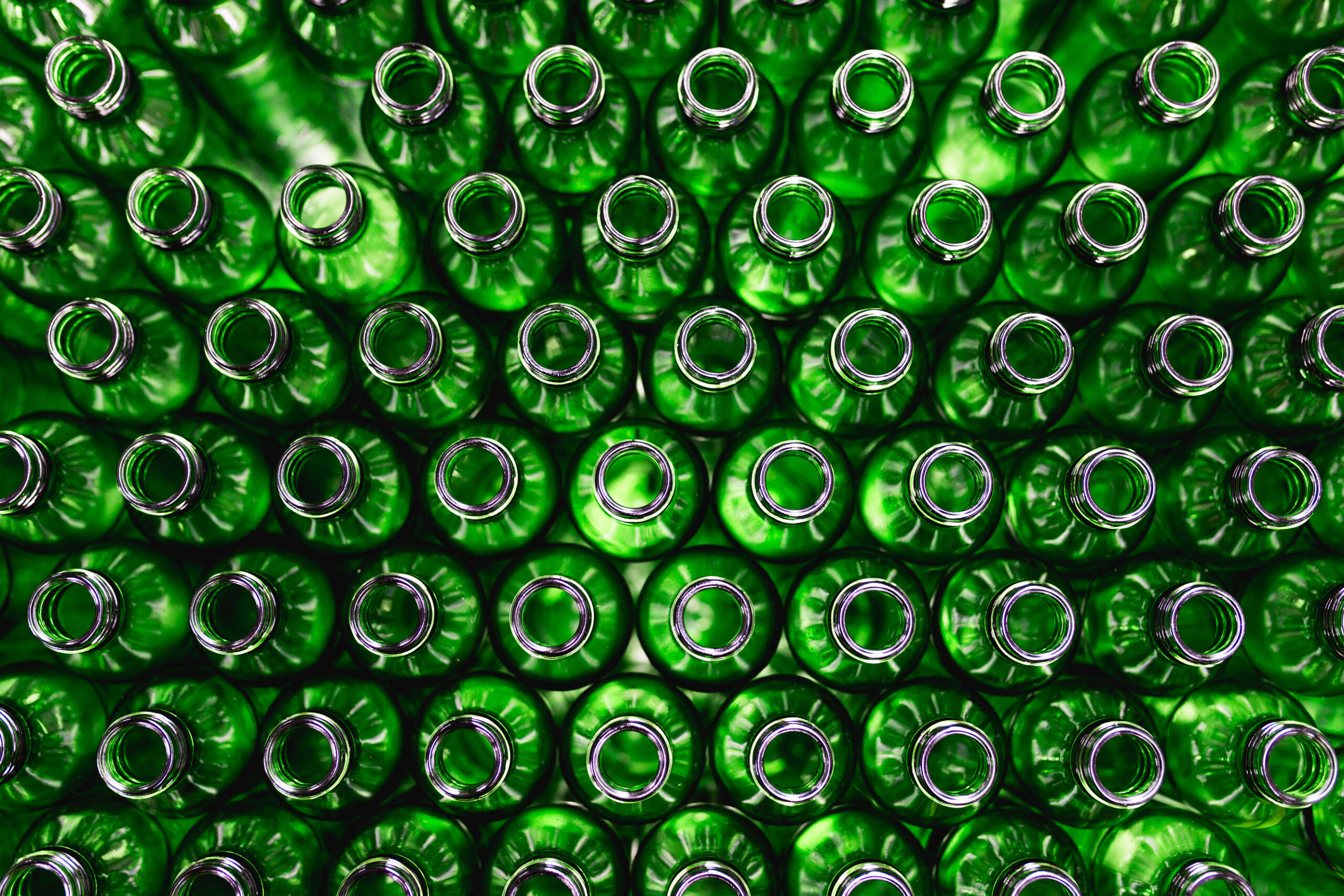Glass Doesn’t Always Beat Industrial Plastic

The perceived plastic problem, whether real or not, is one of the hottest sustainability topics of the day. People are so concerned about consumer and industrial plastic pollution they are willing to look at any material that might replace it. Glass is often touted as the best option. But if you dig deeply enough to look at the details, you discover that glass isn’t always a suitable replacement. It is worse than plastic in some cases.
Full disclosure requires us to admit that we benefit from a robust plastics industry. We buy and recycle a variety of industrial scrap plastics in seven states. Without materials like plastic purge and scrap tubing, Seraphim Plastics would not exist.
With that out of the way, we are also keenly aware that there is no such thing as a perfect manufacturing material. There is no material on Earth we can harness without having some impact on the environment. Even glass has its sustainability problems.
Glass Is Made from Silica
Glass is often pushed as the most sustainable manufacturing material we have because it is made from silica. Silica is a natural substance. More specifically, it is an oxide of silicon found in multiple natural sources. Silica is the primary constituent of sand. As such, unbelievable amounts of sand are harvested every year to satisfy the world’s thirst for glass.
It should be noted that plastic is derived from an equally natural material. That material is petroleum. The petroleum polymers that eventually become plastic are derived from the refining process. In essence, plastic is a byproduct of making gasoline, heating oil, motor oil, etc.
Industrial Plastic, Glass and Other Materials All Have Issues
As previously stated, there is no manufacturing material that comes without problems. Our perceived plastic problem lies in the fact that plastics take an awfully long time to degrade. Some plastics can sit in a landfill for decades before breaking down. Others take so long that we cannot put a time estimate on them.
Glass has an advantage here in that it doesn’t break down at all. As a result, there are no concerns about tiny molecules or unwanted chemicals leaching into soil and groundwater. What’s more, glass can be converted back into raw silica and then reformed into new glass with no loss of integrity. However, glass is not without its environmental and health concerns. Here are just some of those concerns:
- High Environmental Footprint – Glass comes with a higher environmental footprint compared to plastic, aluminum, and even paper. It takes a lot of silica to make glass.
- Damaging Mining Practices – Mining the amount of sand necessary to keep glass manufacturing going causes incredible environmental destruction. Land deterioration and the loss of biodiversity are common.
- Physical Hazards – Sand mining and glass manufacturing expose workers to excessive amounts of silica dust which can pose serious health risks. Acute silicosis is just one of the health hazards linked to sand exposure.
None of this is to say we should stop making glass. It is not to say that we should stop mining sand for its silica. Rather, we accept the fact that harvesting natural resources to create manufacturing materials comes with risks, risks that cover everything from human health to environmental damage.
Finding Better Ways to Do It
The solution to the problems caused by glass and plastic is not banning either material. Even if we got rid of both, we would still have problems with whatever materials replaced them. No, the solution is to find better ways to do what we do. This includes how we recycle postindustrial plastic scrap. We can solve our problems without banning manufacturing materials.